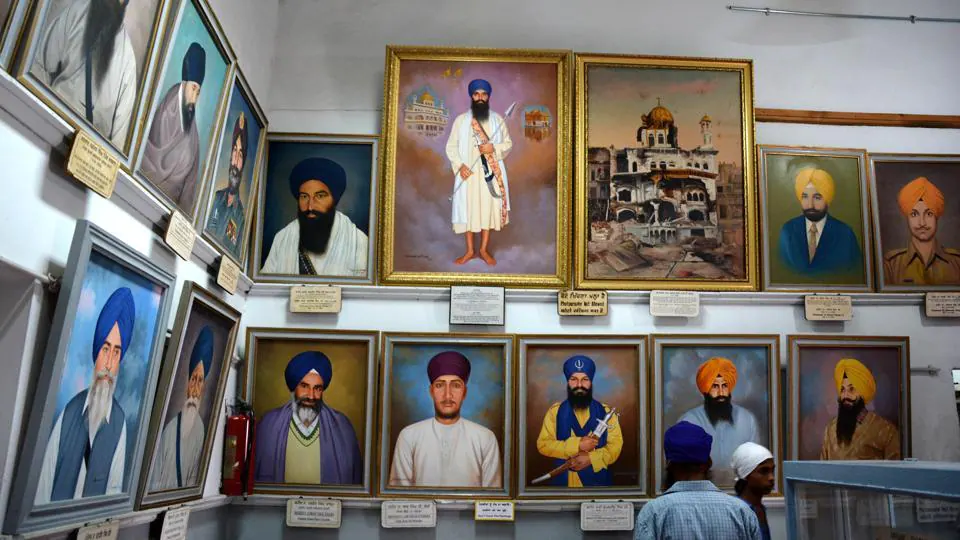From Sikh militants to conflict heroes and freedom fighters, all percentage area at the partitions of the Central Sikh Museum withinside the Golden Temple right here, which for over six a long time now has been a huge enchantment for devotees and fanatics of the Sikh records.
Established in 1958, it’s far housed on the primary ground of the halls located alongside the parikrama of the Golden Temple. It is split into exclusive sections primarily based totally on Sikh records, with every housing artifacts from the corresponding period.
The museum grabbed the headlines after the portrait of former Punjab leader minister Beant Singh’s murderer Dilawar Singh became unveiled right here on Tuesday.
In the portrait’s caption, Dilawar Singh — a cop who joined the militant outfit Babbar Khalsa International and have become a suicide bomber to assassinate the CM on August 31, 1995 — has been defined as the only “who attained martyrdom even as setting an stop to the kingdom atrocities”. The blast on the secretariat complicated in Chandigarh had additionally claimed sixteen different lives.
SGPC president Harjinder Singh Dhami had stated, “Dilawar Singh had placed an stop to the atrocities and gross human rights violations devoted towards the Sikhs. The choice of sacrificing self isn’t always viable with out the Guru’s advantages and every time atrocities have been devoted at the community, Sikhs have constantly made records through making sacrifices.”
Real gems: The artifacts
The museum’s series is enriched through many antique manuscripts, such as the only with the signature of Guru Hargobind withinside the shape of ‘mool mantra’.
It additionally homes the timber comb of Sri Guru Gobind Singh, kamar kasa (a material to tie across the waist), gatra (sword belt), dumala’s chakar (turban ring) of Baba Deep Singh, sword of Bhai Mehtab Singh which he used to behead Massa Rangarh, sword of Maharaja Ranjit Singh’s kamar kasa which he used throughout the strugglefare of Kasur, different ancient arms, small photos, cash used throughout the Sikh rule, and the antique devices of gurmat sangeet (Sikh Music).
Tear fueloline shells utilized by the Punjab police towards the Akalis throughout Punjabi Suba Movement in 1955 in the shrine complicated also are on show, except lengthy weapons utilized by the Sikh warriors in antique times.
Portraits and art work
The portray on show that depict the wonderful Sikh records, are created through eminent artists, such as Sobha Singh, Kirpal Singh, Master Gurdit Singh, Thakur Singh, Bodh Raj, Amar Singh and Mehar Singh.
According to Golden Temple supervisor Sulakhan Singh Bhangali, there are as many as seven-hundred photos withinside the museum.
“These photos depict the bravery of Sikhs, their tolerance, Sikh records, culture, traditions and their sacrifices made for the country’s independence. Thus, the museum describes first rate Sikh records withinside the shape of those pictures,” he stated.
“To sell the pictorial artwork, Maharaja Ranjit Singh, Maharaja Sher Singh, Maharaja Dalip Singh made contributions. The artwork of portray advanced withinside the different Sikh states additionally. Maharaja Narinder Singh Walia of Patiala Kalan became a eager observer of pictorial artwork and in his time (1846-1862), the artwork of portray became at its peak. The Sikh Guru’s photos display the abilties of artists on the time. Their colored art work are displayed withinside the museum,” he added.
A must-watch corridor and its partitions
On one facet of the corridor, there are photos of many Sikh militants except that of former top minister Indira Gandhi’s bodyguards-turned-assassins Satwant Singh and Beant Singh.
The photos encompass the ones of Sikh militant preacher Jarnail Singh Bhindranwale, Amrik Singh and General Shabeg Singh, who have been killed withinside the Operation Bluestar, and Sukhdev Singh Sukha and Harjinder Singh Jinda, who assassinated General AS Vaidya to avenge the navy motion on the Golden Temple. Congress and a few different corporations had antagonistic set up of Bhindranwale’s portrait withinside the museum in 2007.
On different sides, there are photos of Sikh conflict heroes, such as Gen Jagjit Singh Arora, Lt Gen Harbaksh Singh, Marshal of the Indian Air Force Arjan Singh, Gen Bikram Singh.
Portraits of freedom fighters, such as Bhagat Singh, Kartar Singh Sarabha and Udham Singh also are on show on the museum. It additionally has photos of former SAD president Sant Harchand Singh Longowal, who became assassinated through militants.
“There is an 8-member committee which comes to a decision approximately the set up of photos right here. It is headed through Akal Takht jathedar. It sends its advice to the government committee of the SGPC, which takes the very last name approximately it,” stated Mangal Singh, one of the personnel running on the museum.
Plan of museum revamp in limbo
In 2017, SGPC resolved to redesign this museum. It had marketed to are searching for consultancy offerings from reputed worldwide and country wide companies withinside the fields of museum planning, design, structure and interiors. However, the undertaking of giving it a facelift is in limbo. Besides revamping the museum, the SGPC additionally labored on increasing it. Presently, the museum spreads in a place of 6,000 rectangular feet. Under the growth undertaking, the floor ground became additionally merged with the museum, therefore doubling the area, however this new element is mendacity empty.


